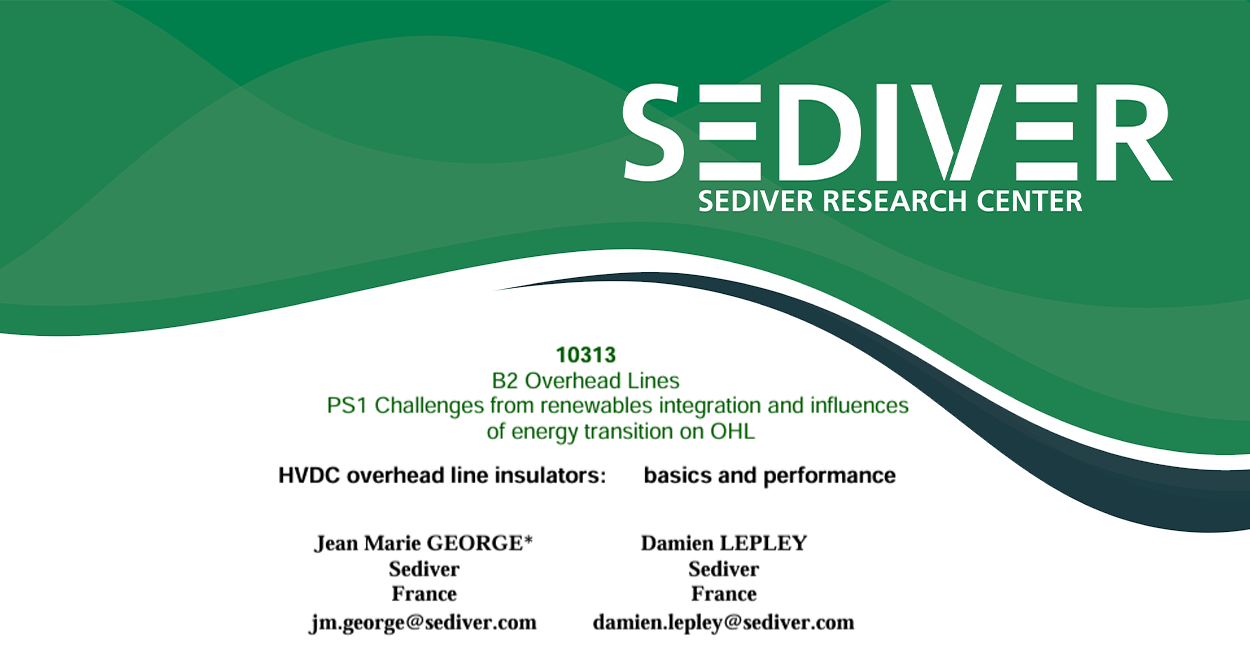Abstract:
The increase of energy demand and the progressive deeper impact of renewable energy in the global energy mix has triggered a strong interest in building new DC lines, upgrade older lines or convert AC to DC some existing segments taking advantage of existing rights of ways. This trend is consistent worldwide with projects going through a variety of environments and therefore with the need to design or adapt the insulation of the line with the most appropriate insulators.
IEC has established a long time ago a DC standard (IEC 61325) [1] which describes the technical requirements for DC overhead line insulators made of glass or porcelain dielectrics, but standardization bodies are still struggling with polymers for which some work is ongoing in CIGRE and IEC, often describing tests which are performed under AC stress and extrapolated to DC application, which by nature can be a challenge or seem inconsistent with the expected difference of performance when a DC voltage is applied. On the other hand, IEC 60815-4 [2] is a guide providing information related to the pollution performance and string design characteristics of insulators in DC stress conditions.
Several key aspects of DC insulator design will be re explained as it appears that some of the basics have been forgotten by some line engineers over the years. Among the main considerations some particularities of the end fittings and some geometrical aspects of the dielectric itself have been overlooked while relatively well described in the past and misapplications are possible today if these aspects are not clearly understood.
From a pollution point of view IEC 60815-4 [2] should be reviewed and the paper will present actual data to be compared with the theoretical approach described in the guide. The biggest gap between the mathematical model and reality is related to the calculation method of the USCD (Unified Specific Creepage distance) for a given pollution level. Consequently, strings will end up being longer with the model than needed resulting in possible higher costs of the towers.
A particular aspect of polluted insulators in DC in harsh environments is the benefit of a hydrophobic surface. For polymer insulators the ageing and erosion of the housing is a fundamental question for which there is no test today making consensus (ongoing work in CIGRE D1 72) [3]. For silicone coated glass or porcelain insulators the question is different given the absence of a fiberglass core which needs an absolute protection under the housing. Coating erosion and strength in DC has been evaluated especially for coated glass insulators and results will be presented.
Pollution performance in DC through artificial pollution tests with silicone coated insulators will also be discussed including the difficult aspect of producing an artificial heavy or very heavy layer. The transfer of hydrophobicity, which is the fundamental benefit of using hydrophobic surfaces for those thick layers can be a challenge in a laboratory and mostly the representativeness of the surface deposit when applied in one operation compared to the natural and progressive built up in service which will allow a progressive transfer over time.
To read more, please download the pdf of the technical paper
通过本表格收集的信息由SEDIVER(简化的股份有限公司)处理,该公司在Nanterre 贸易和公司登记处注册,注册号542035761,总部位于7/9 allée de l 'Arche 92400 Courbevoie,目的是允许您下载我们的白皮书文件,并向您发送我们集团公司和产品的信息。这些处理活动的法律依据是我们需要知道谁访问和下载了我们的资源,以及给他们发送直接市场沟通的合法权益。
带有星号(*)的字段是必填信息。如您没有提供所需的信息,将无法下载白皮书文件。
在适用的当地法律允许的范围内,您有权访问、整改、消除和限制对您的个人数据的处理,也有权规定在您身故后的数据处理方案,您同时拥有您个人数据的数据可携权。您也有权利通过勾选本表格的专用框,并在任何时候通过点击我们所有市场传播中的取消订阅链接来拒绝接收市场传播。
如欲了解更多有关我们如何处理您的个人资料及如何行使您的权利,请参阅SEVES集团欧盟隐私政策及SEDIVER隐私政策。
如需更多信息,请咨询我们的隐私政策。
 简体中文
简体中文
